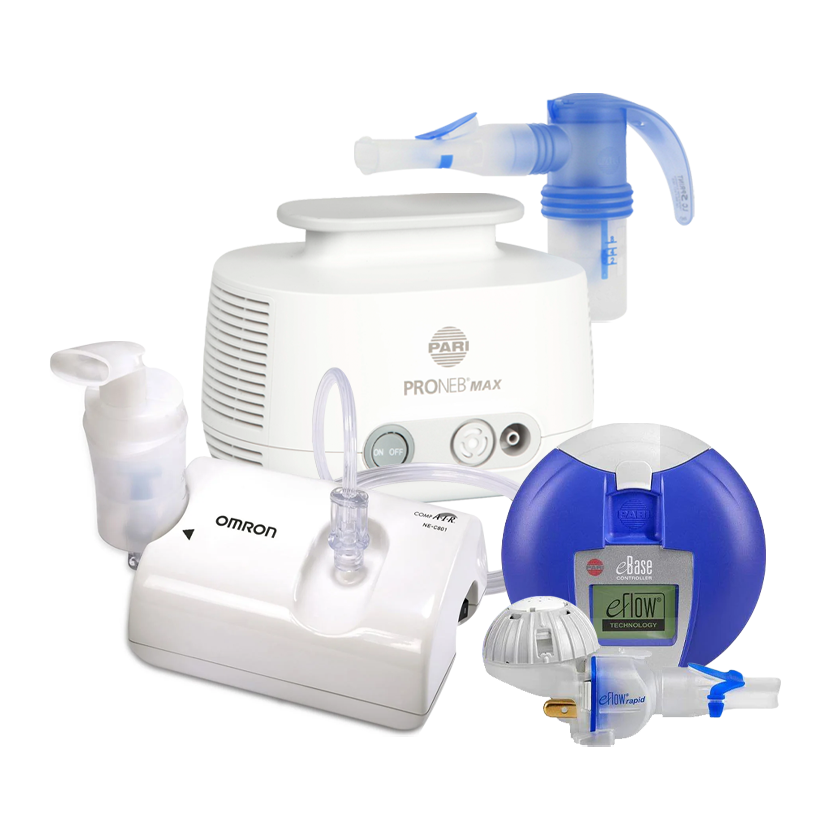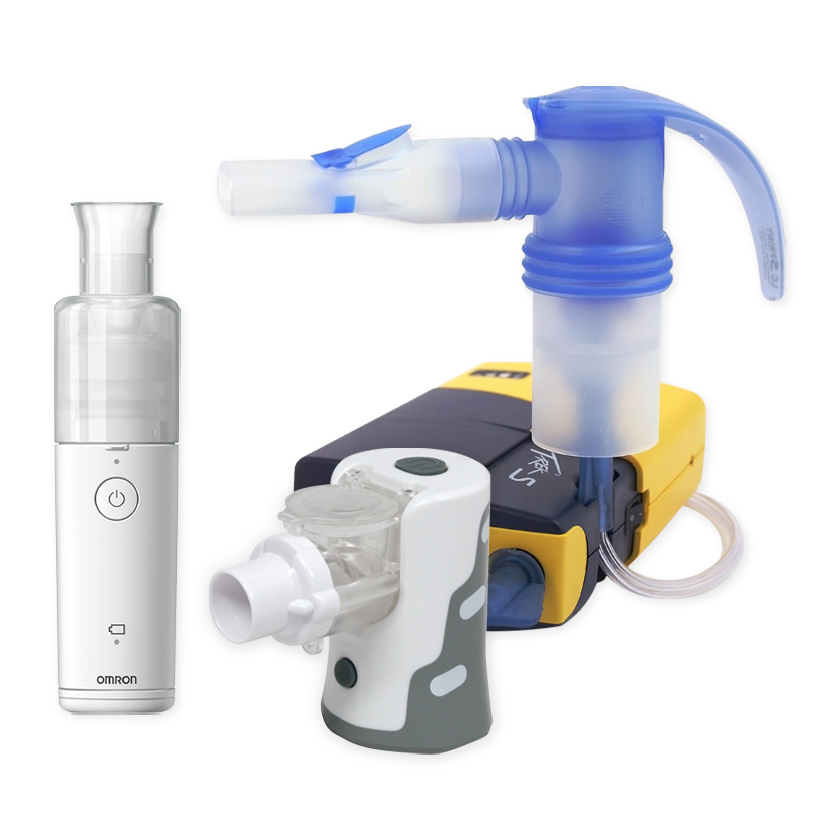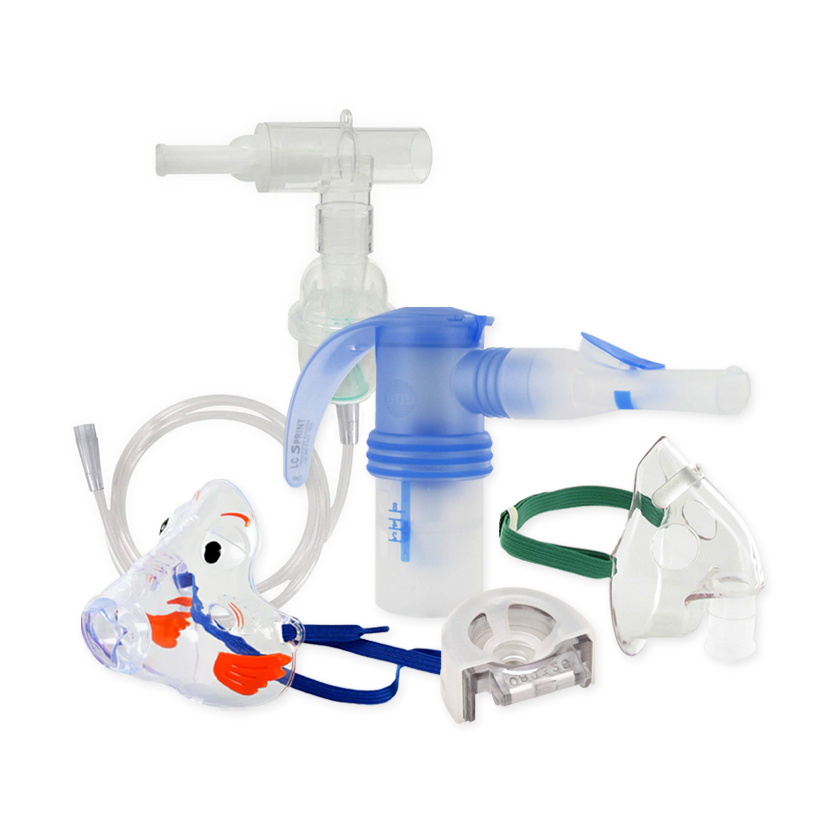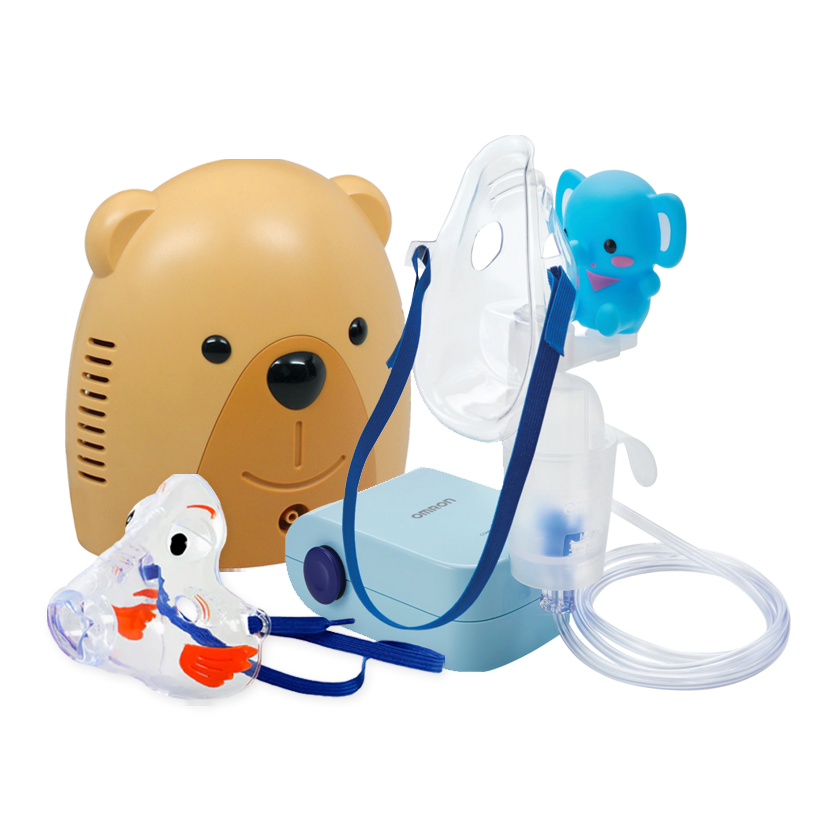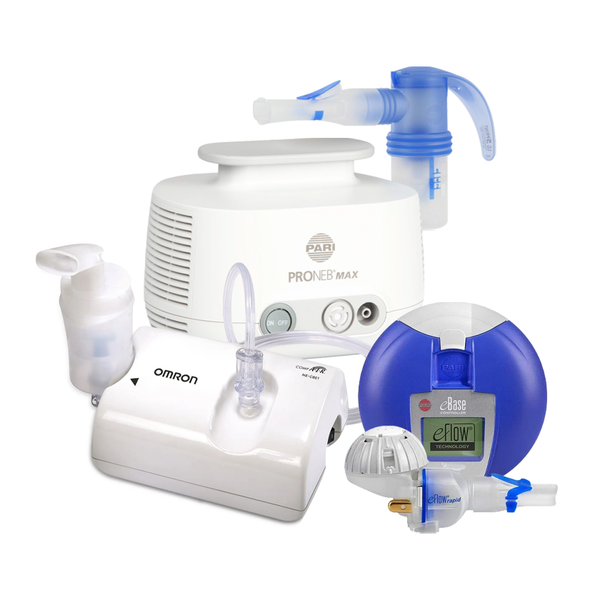Your Cart is Empty
Tips & Advice Center: Respiratory Care

Relieving Congestion with a Steam Vaporizer >>
Battery-Powered Nasal Aspirators >>
Fingertip Oximeters >>
How to Choose a Pulse Oximeter >>
Vaporizers vs. Humidifiers >>
Peak Flow Meters >>
MABIS Personal Steamers for Natural Health >>
Pulse Oximeters for Healthcare Settings >>

Relieving Congestion with a Steam Vaporizer
One of the greatest tools for combating nasal and sinus congestion is moisture. When you have allergies, a cough, cold, or another respiratory ailment, almost nothing feels better than the mist of a steam vaporizer. Vaporizers turn water into steam, then propel the warm steam into the air. The steam helps loosen any mucus in your sinuses, throat, or chest. When using a warm steam vaporizer in the home, keep the following precautions in mind:
- Look for a model that features an automatic shut-off switch. Not only is this convenient, but it also promotes safety.
- If you have children, make sure they don't get too close to the vaporizer, as the steam could burn them.
- Use distilled water to keep tap water minerals from creating dust in your home.
- Always position and aim the vaporizer away from curtains, beds, carpets, or artwork to keep them from getting wet.
- If you start to notice beads of water on the walls or other surfaces after use, reduce the amount of time that you use the vaporizer.
- Clean your steam vaporizer according to the manufacturer's instructions.

Battery-Powered Nasal Aspirators
If you're a parent, you may have had to use a manual aspirator to clear up your child's stuffy nose in the past. If you've ever had to use one to relieve a baby's nasal congestion, you're probably aware of the challenge that the manual devices present. To make things easier, try the Nasal Clear battery-operated nasal aspirator. While it's more expensive than manual aspirators, it has many worthwhile advantages:
- It clears stuffy noses quickly with strong but gentle suction.
- You have better control over the amount of suction.
- It plays music to comfort your baby.
- There are two sizes of tips to choose from.
- It can be taken apart and run through the dishwasher.
If your child has asthma or another respiratory condition, using a reliable and safe tool to reduce congestion is extremely important. Contact your healthcare provider or call us for more information.

Fingertip Oximeters
Fingertip oximeters are small, affordable, and great for personal use. If you need to monitor your blood oxygen saturation level due to asthma, COPD, or another respiratory or cardiac condition, here is some helpful information:
- A fingertip oximeter is placed on the tip of the finger to measure pulse rate and the levels of red pigment hemoglobin in the blood. Oxygenated hemoglobin and non-oxygenated hemoglobin are different colors. The red and infrared lights in an oximeter measure these colors to determine how much of your blood is oxygenated.
- Handheld oximeters are fairly expensive and are used primarily in healthcare settings, while fingertip oximeters can be used both in healthcare settings and in the home.
- Oximeters are non-invasive. No blood drawing or needle sticks are necessary. To use, the patient inserts his or her finger into a clamshell- or box-like device and readings are displayed on a lighted screen.
- Fingertip oximeters are affordable, starting at around $65.
- Fingertip oximeters are very small (most of them weigh just a couple of ounces), making them very easy to carry with you at all times.
- Do not use a fingertip pulse oximeter with dark nail polish. It can adversely affect the accuracy of the reading. It is best to use a pulse oximeter with natural finger nails.

How to Choose a Pulse Oximeter
A pulse oximeter is a simple medical device that helps measure blood oxygen and heart rate levels. This non-invasive tool is ideal for people with cardiac or respiratory conditions, such as asthma, sleep apnea, or chronic obstructive pulmonary disease (COPD). Pulse oximeters are used extensively in hospitals and other healthcare settings, and can also be used while at home or on-the-go. If your doctor has recommended that you monitor your vitals daily with an oximeter, here are a few things you should consider when choosing one for the first time.
- Type– The standard fingertip pulse oximeter is clipped onto the finger; the display screen is on the clip itself, making the unit completely portable. A handheld oximeter is often used in hospitals and other medical settings. The screen is connected to a sensor clip, which is then attached to your finger, toe, or ear. Wrist oximeters feature a display device that wraps around the wrist and a fingertip probe – these are often used for long term or overnight monitoring. The tabletop oximeter is the largest oximeter available. It features a fingertip probe and a large display device that sits on a nearby table. These are ideal for ICU patients.
- Accuracy– You want to make sure that your device is providing accurate and reliable measurements each time. Verify your oximeter’s accuracy by comparing the reading with that of an oximeter used in your doctor’s office.
- Alarms– Some oximeters feature alarms that sound after the reading is recorded or if vital signs are abnormal. Alarms can also be set to go off at a certain measurement, to allow caregivers to know when a patient has exceeded or fall short of the threshold limit.
- Size & portability– Pulse oximeters vary in size. If you’re active and plan on carrying your oximeter wherever you go, choose a smaller fingertip oximeter that’ll easily fit inside your pocket or bag. Smaller oximeters are great for spot checks.
- Display– The oximeter should be easy to read and understand. Look for oximeters with a large type display and a backlight for easy viewing. Some display screens automatically flip so it can be viewed at different angles.
- Special features– The more advanced oximeters come with special features, including calorie count and plethysmograph capabilities. This pulse ox uses Bluetooth technology, allowing you to download recorded data and share it with your doctor.
- Durability– Make sure that your oximeter is durable enough to withstand humidity and accidental drops. This Drive oximeter comes with a protective cover. Carrying cases are also available for easy storage and transport.
- Battery use– The portable oximeters use batteries, while some larger units require an electrical outlet. Most devices will indicate when the battery level is low.
As with purchasing any other product, be sure to read customer reviews before choosing an oximeter. Do your research, and ask your doctor for recommendations.

Vaporizers vs. Humidifiers
When the air around you lacks moisture, your nasal passages can become dry, causing nasal congestion, nosebleeds, itchy skin, or static. This can be especially problematic during the colder months, as central heating systems tend to dry out the air. Putting moisture back into the air is an effective way to eliminate these problems.
The best way to tell if you have dry air is to use a moisture-sensing meter in your home. Your humidity levels should be between 40 and 50 percent (or more if you have a respiratory ailment–your healthcare provider can tell you what your optimum humidity level is). Adding moisture to the air is as simple as using a humidifier or vaporizer. These two devices work differently, so it's important to know how they work in order to determine which one is right for you.
First of all, humidifiers release cool vapor into the air, while vaporizers release warm vapor (steam) into the air. Humidifiers use a wicking filter to extract cold water from the built-in basin, then a fan blows air through that filter and out into the room. Vaporizers heat up the water to create steam, which rises into the air.
One of the advantages to a humidifier is that, since the water isn't boiled, there's no danger of the user (or children) being burned. On the other hand, with a vaporizer, you don't have to worry about adding bacteria or mold from tap water minerals into the air, as they're boiled out. Whichever type you choose, it's important to keep them very clean to ensure effectiveness and safety.

Peak Flow Meters
Peak flow meters are often recommended for people with asthma, COPD, chronic bronchitis, and other respiratory conditions. A peak flow meter is generally used to monitor the effectiveness of a patient's breathing treatment. How does this work?
A peak flow meter is a small device with a mouthpiece and a numbered scale. The patient blows into the scale and the forced air causes a marker along the numbered scale to move. This gives both the individual and his or her healthcare provider insight into severity of symptoms and whether or not the current treatment plan is effective. For example, if the individual's ability to blow air into the meter is shown to improve, then his or her healthcare provider may be able to lower the amount of medication needed. On the other hand, if the patient's breathing appears to be worsening, the healthcare provider can make changes to the treatment plan or develop a new one.
There are two ranges of meters. The first is low-range and is used for small children, and the second, the standard range, is to be used by teens and adults. Peak flow meters are affordable, starting at around $10.

MABIS Personal Steamers for Natural Health
If you've ever experienced congestion due to a cold, sinus infection, flu, or allergies, you've probably also felt the relief that a hot shower or bath can bring. That's because steam is a great natural tool for clearing up nasal and sinus congestion. If you prefer to treat cold or allergy symptoms naturally, a MABIS personal steam inhaler provides great relief without the use of medication.
Personal steam inhalers deliver a steady stream of vapor to the airways for the duration of each 6- to 9-minute treatment. The hot, damp vapor works to break up mucus, helping you breathe more easily. Some users notice immediate improvement in their breathing. This device can be used to treat allergies, bronchitis, colds, flu, sinusitis, rhinitis, laryngitis, and other respiratory problems.
Aface mask attachment is available for added comfort (and because it delivers steam to the entire face, this accessory has the added benefit of improving your complexion).

Pulse Oximeters for Healthcare Settings
Pulse oximeters measure the blood's oxygen saturation. They are used for patients who have COPD, asthma, and other respiratory conditions. Oximeters are also used by pilots to warn against hypoxia (oxygen deprivation).
A good small oximeter can assess blood oxygen levels and take accurate pulse readings in a variety of settings. Oximeters can be used in the home, hospitals, emergency rooms, nursing homes, and medical clinics.
There are differences in portable oximeters designed for use in healthcare settings. Here are a few:
- The PalmSAT 2500 ($649) is a small digital unit that is designed to be held by the healthcare provider for easy reading of oxygen saturation. The alarm version provides and audible warning if the oxygen saturation gets too low.
- The 9560 Onyx II Pulse Oximeter ($469) allows patients to send oximeter readings wirelessly to healthcare providers using Bluetooth® Wireless Technology.
- The 3100 WristOx Starter Kit ($985) is a small, lightweight pulse oximeter designed to be work comfortably on the wrist. The WristOx is ideal for monitoring daily activities and often recommended for sleep studies and long term oxygen therapy (LTOT).
To find out more about pulse oximeters, ask the experts at Just Nebulizers or talk to your healthcare provider.

